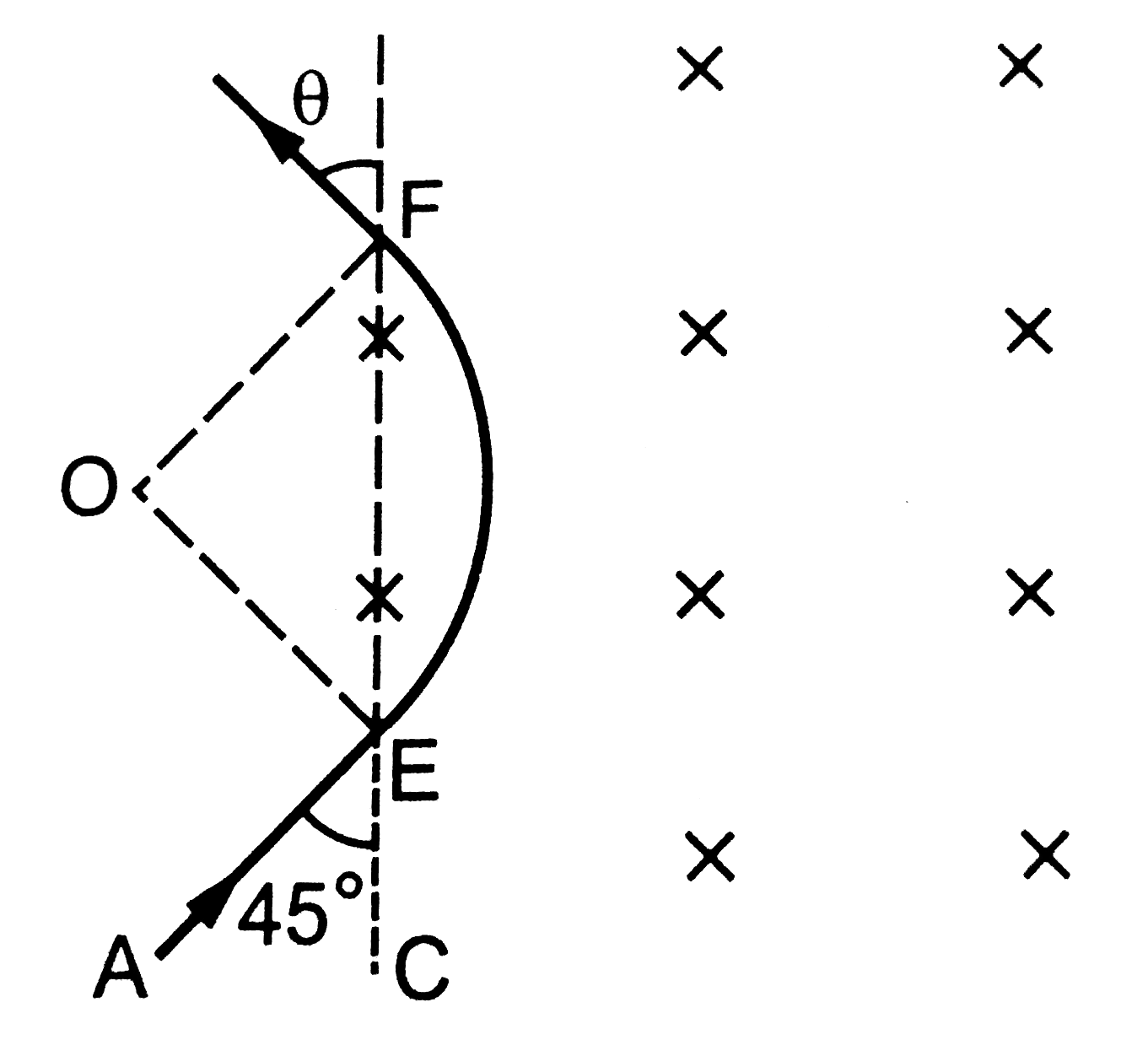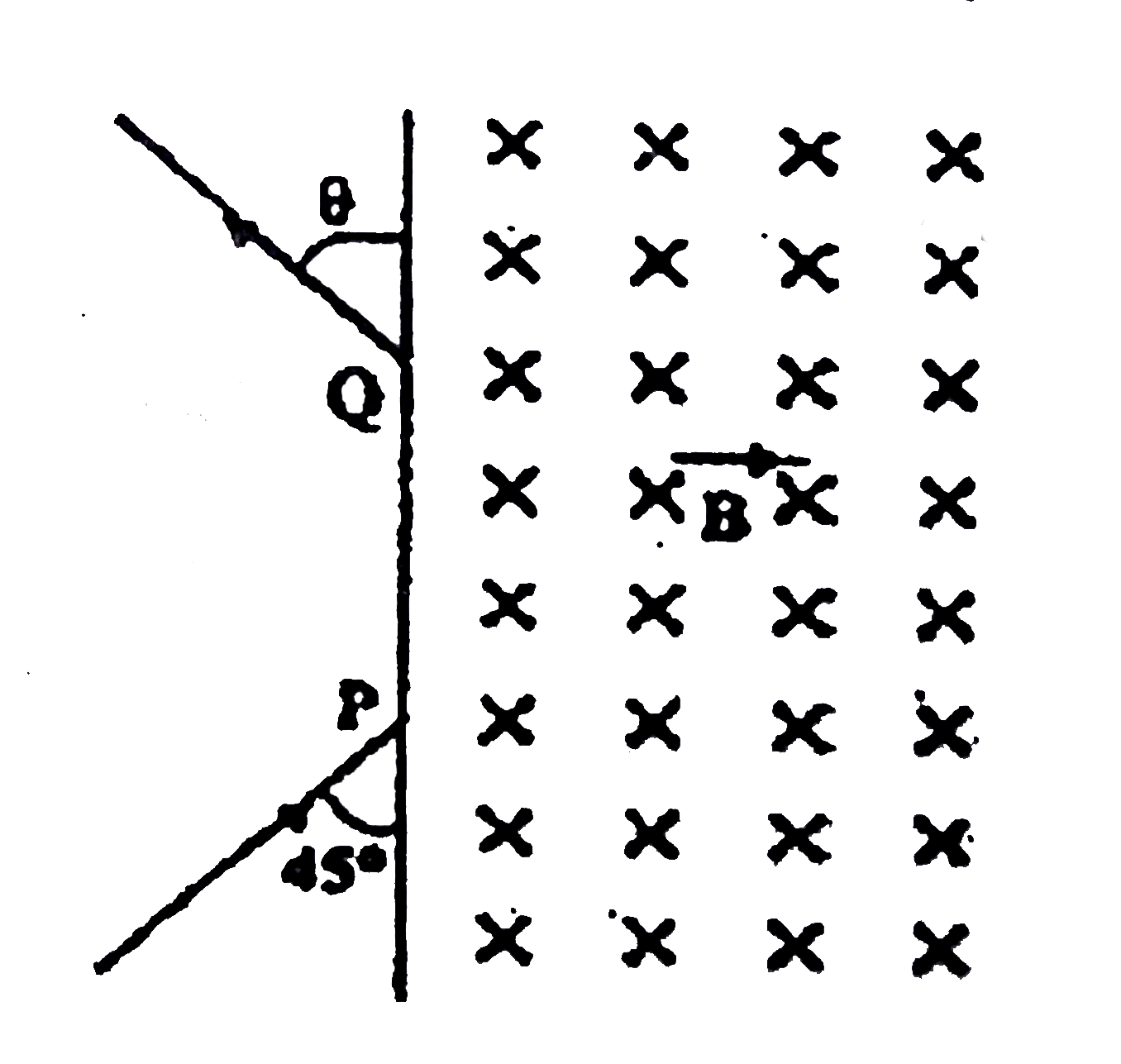A proton of mass 1.67×10−27 kg and charge 1.6×10−19C is shot a uniform magnetic field, and perpendicular to the field with a velocity 5×106m/s. If the magnetic induction of the field is 1 tesla, find
(ii) The frequency of revolution.
To find the frequency of revolution of a proton moving in a magnetic field, we can follow these steps:
Step 1: Understand the motion of the proton in the magnetic field
When a charged particle, like a proton, moves perpendicular to a magnetic field, it experiences a magnetic force that causes it to move in a circular path. This force is given by the Lorentz force equation:
F=qvB
where:
- F is the magnetic force,
- q is the charge of the proton,
- v is the velocity of the proton,
- B is the magnetic field strength.
Step 2: Relate the magnetic force to centripetal force
For circular motion, the magnetic force acts as the centripetal force required to keep the proton moving in a circle:
F=mv2r
where:
- m is the mass of the proton,
- r is the radius of the circular path.
Step 3: Set the magnetic force equal to the centripetal force
Equating the two forces gives:
qvB=mv2r
Step 4: Solve for the radius r
Rearranging the equation to find the radius r:
r=mvqB
Step 5: Find the time period T of revolution
The time period T for one complete revolution is given by:
T=2πrv
Substituting the expression for r:
T=2π(mvqB)v=2πmqB
Step 6: Calculate the frequency f
The frequency f is the reciprocal of the time period:
f=1T=qB2πm
Step 7: Substitute the values
Now we can substitute the given values into the frequency formula:
- Charge of the proton q=1.6×10−19C
- Magnetic field B=1T
- Mass of the proton m=1.67×10−27kg
Substituting these values:
f=(1.6×10−19C)(1T)2π(1.67×10−27kg)
Step 8: Calculate the frequency
Calculating the above expression:
f=1.6×10−192π×1.67×10−27
f≈1.6×10−1910.5×10−27
f≈1.52483×107Hz
Final Answer
The frequency of revolution of the proton is approximately:
f≈1.52×107Hz
---
When a charged particle, like a proton, moves perpendicular to a magnetic field, it experiences a magnetic force that causes it to move in a circular path. This force is given by the Lorentz force equation:
F=qvB
where:
- F is the magnetic force,
- q is the charge of the proton,
- v is the velocity of the proton,
- B is the magnetic field strength.
For circular motion, the magnetic force acts as the centripetal force required to keep the proton moving in a circle:
F=mv2r
where:
- m is the mass of the proton,
- r is the radius of the circular path.
Equating the two forces gives:
qvB=mv2r
Rearranging the equation to find the radius r:
r=mvqB
The time period T for one complete revolution is given by:
T=2πrv
Substituting the expression for r:
T=2π(mvqB)v=2πmqB
The frequency f is the reciprocal of the time period:
f=1T=qB2πm
Now we can substitute the given values into the frequency formula:
- Charge of the proton q=1.6×10−19C
- Magnetic field B=1T
- Mass of the proton m=1.67×10−27kg
f=(1.6×10−19C)(1T)2π(1.67×10−27kg)
Calculating the above expression:
f=1.6×10−192π×1.67×10−27
f≈1.6×10−1910.5×10−27
f≈1.52483×107Hz
The frequency of revolution of the proton is approximately:
f≈1.52×107Hz
Similar Questions
A proton of mass 1.67×10−27 kg and charge 1.6×10−19C is shot a uniform magnetic field, and perpendicular to the field with a velocity 5×106m/s. If the magnetic induction of the field is 1 tesla, find
(i) The radius of the circular path
View SolutionA particle of mass m=1.6×1027 kg and charge q=1.6×10−19 C moves at a speed of 1.0×107ms−7. It enters a region of uniform magnetic field at a point E, as shown in The field has a strength of 1.0 T. (a) The magnetic field is directed into the plane of the paper. The particle leaves the region of the filed at the point F. Find the distance EF and the angle theta. (b) If the field is coming out of the paper, find the time spent by the particle in the region of the magnetic field after entering it at E.

View Solution
Knowledge Check
A particle of mass 1.6×10−27kg and charge 1.6×10−19 coulomb enters a uniform magnetic field of 1 Tesla as shown in the figure. The speed of the particle is 107m/s. The distance PQ will be
 A0.14 mB0.28 mC0.4 mD0.5 m
A0.14 mB0.28 mC0.4 mD0.5 mAn electron having mass (9.1×10−31kg) and charge (1.6×10−19C) moves in a circular path of radius 0.5 m with a velocity 106m/s in a magnetic field. Strength of magnetic field is
A1.13×10−5TB5.6×10−5TC2.8×10−5TD3.6×10−5TA proton (mass=1.67×10−27kg and charge 1.6×10−19C) enters perpendicular to a magentic field of intensity 2weber/m2 with a speed of 2.6×107m/sec. The acceleration of the proton should be
A6.5×1015m/sec2B6.5×1013m/sec2C6.5×1011m/sec2D6.5×109m/sec2
A particle of mass m=1.6×10−27 kg and charge q=1.6×10−19C enters a region of uniform magnetic field of stregth 1T along the direction shown in figure. The speed of the particle is 107m/s

a. The magnetic field is directed along the inward normal to the plane of the paper. The particle leaves the region of the fiedl at the point F. Find the distasnce EF and the angle theta.
b. If the direction of the field is along the outward normal to the plane of the paper find the time spent by the particle in the regin of the magnetic field after entering it at E.
View SolutionA cyclotron, when being used to accelerate protons (mass = 1.67×10−27kg, charge = 1.6×10−19C) has a magnetic field of π2 tesla applied normal to the plane of its does. What must be the value of the frequency of the applied alternating electric field to be used in it?
View SolutionA proton (mass=1.67×10−27kg and charge 1.6×10−19C) enters perpendicular to a magentic field of intensity 2weber/m2 with a speed of 2.6×107m/sec. The acceleration of the proton should be
View SolutionA charge q , and mass m , is fired perpendicular to a magnetic field (B) with a velocity v . The frequency of revolution of the charge is
View SolutionA particle of mass 6.4×10−27 kg and charge 3.2×10−19C is situated in a uniform electric field of 1.6×105Vm−1. The velocity of the particle at the end of 2×10−2m path when it starts from rest is :
View Solution
